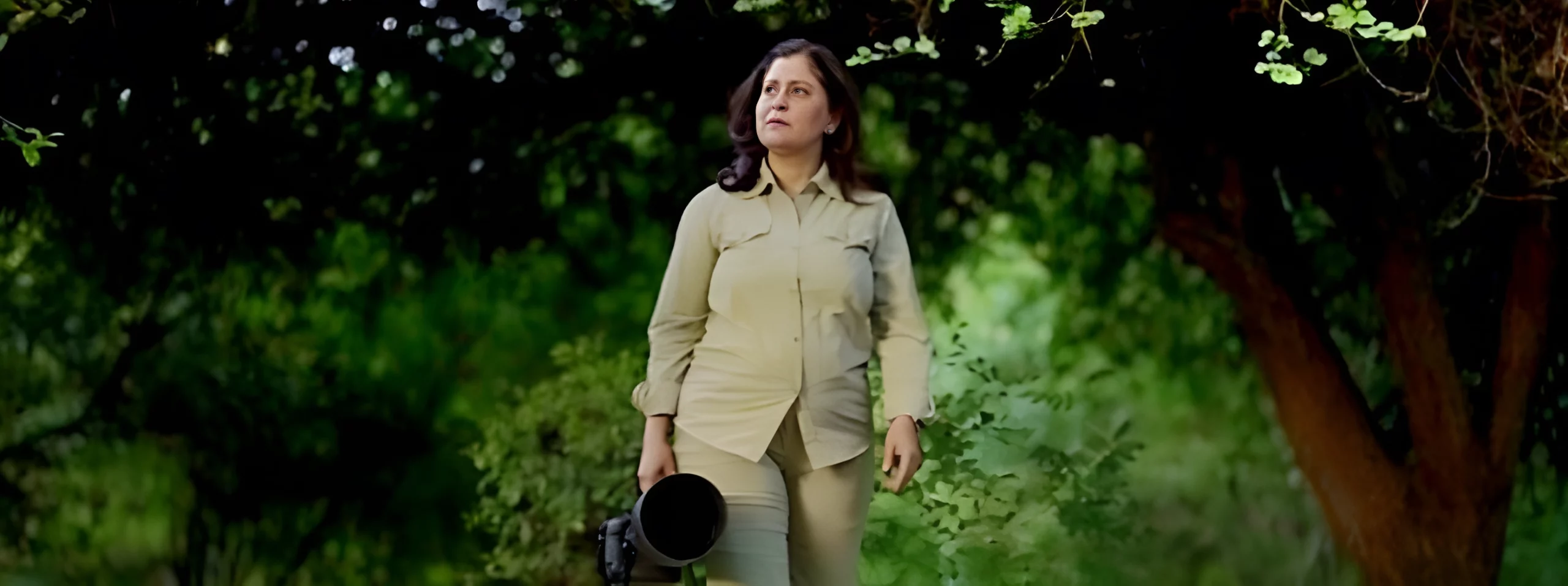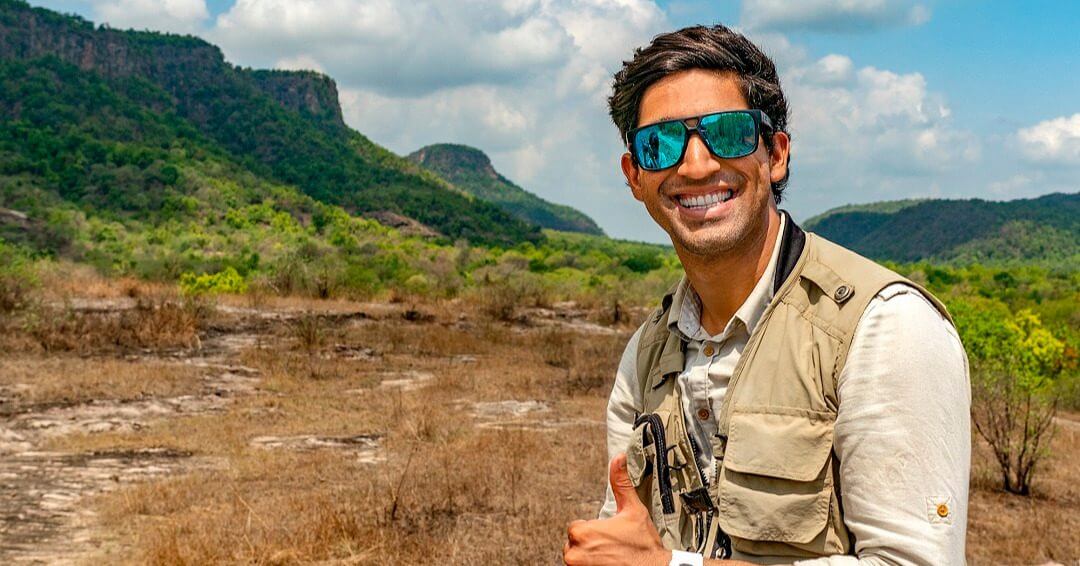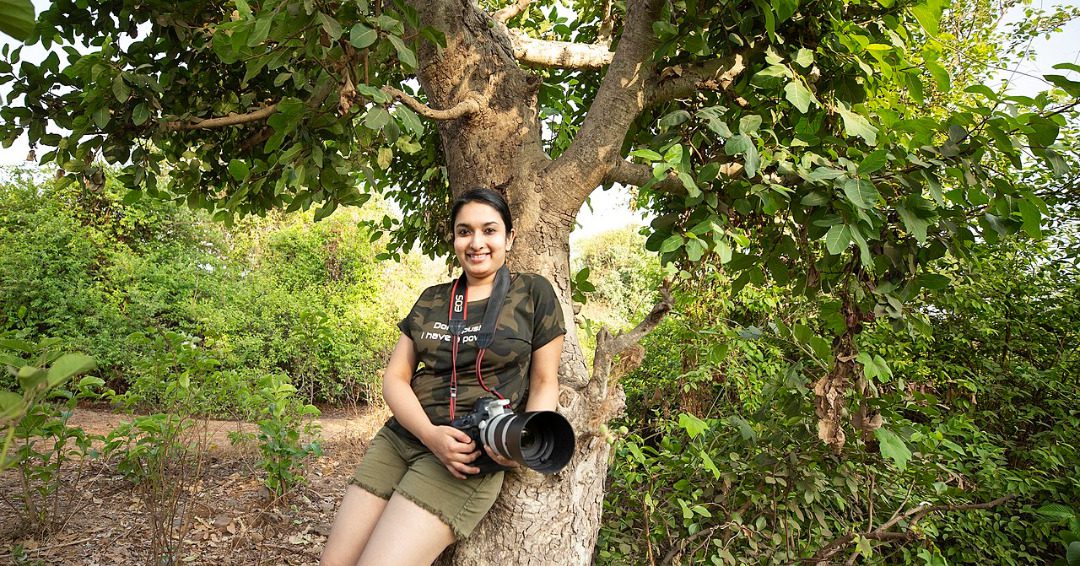(September 28, 2024 ) Dressed in the elegant chiffon sarees that were fashionable among upper crust Indians of her time, equally at ease at high society events and in the depths of the forests of Madhya Pradesh, Latika Nath was an unusual personality, both in social circles and among her conservationist peers. Known as the ‘Tiger Princess’, Latika Nath is India’s first female wildlife biologist, and the first to acquire a Ph.D. dedicated to tiger preservation.
Her recognition spans from securing support from the Save the Tiger Fund for developing camera traps to receiving scholarships from prestigious entities such as the Overseas Research Student Awards Scheme and the Chevening Scholarship, reflecting her academic excellence and dedication to environmental causes. Her efforts in conservation and environmental protection were acknowledged with the Karmaveer Puraskaar and an accolade from ATOI in 2007 for her impact on ecotourism in India. Nath’s expertise and dedication have been spotlighted in documentaries by BBC Wildlife, Discovery Channel, and National Geographic, which gave her the moniker ‘Tiger Princess’.

Tryst with the Royal Bengal Tiger
When she was one year old, Latika received a golden retriever puppy and a Siamese cat. Born into an Indian royal family, Latika grew up amongst wildlife – her father, a doctor at AIIMS and the health advisor to Indira Gandhi until the time of her passing, also set up India’s animal conservationist movement in the 1970s. An avid wildlifer, he also enjoyed hunting big game and would sometimes take his daughter along.
“Ever since she was a little child she had been very fond of animals,” Latika’s mother said in Tiger Princess, a documentary by the National Geographic. The family lived on a farm in Kashmir, where they had lots of animals. “She loved being outside most of the time. She was also very set in her mind about what she wanted to do, she didn’t give us any second choices about her line of interest,” she smiles. Latika’s greatest love, however, was for the Royal Bengal Tiger. “It’s the sheer majesty of the animal,” she says, in the documentary. “It’s the thrill of seeing something so beautiful, so untamed, left in the wild as it is mean to be.”
View this post on Instagram
The atypical environmentalist
After obtaining her undergraduate degree in environment science from Maitreyi College in New Delhi, Latika received a scholarship for the School of Forestry at the University of Wales. Latika had hoped to do a PhD on the snow leopard, which can be found in her homeland, Kashmir, but this was 1989, the year of the militancy and exodus. “We were one of the first few families to be targeted by the terrorists, and they killed eight people of our staff. They came in, gunned them down, and burned our houses.” The family was forced to flee to New Delhi, and Latika left her home and her dreams behind.
In Delhi, Latika met H.S. Panwar, the director of the Wildlife Institute of India, who suggested she do a doctorate on tigers. It was a tough call, and although Latika knew the road ahead would be filled with hardships, she took it on. At the age of 24, with a scholarship from the Wildlife Institute, Latika left home for the first time.
“I just decided what I wanted to do and I did it,” she says, “I borrowed a four-wheel drive from a friend in Delhi and went. I had never driven one before.” Surprisingly, her parents let her go, giving her a maid and a driver. ‘The family thought it was ridiculous,” her mother admitted. They drove through the treacherous ravines of Chambal, the ‘badlands’ ruled by dacoits. At one point, Latika recalled, the driver put up his window, worrying that a bear would put its paw through and get him.

The harrowing journey brought her to Bandhavgarh National Park, where she was greeted by a family friend, Nanda Shumshere Rana. The Ranas, who had ruled Nepal for over a century, were also famous for their love of hunting and the outdoors. Nanda Rana, however, had pivoted, from hunting tigers to conserving them. Latika was so relieved to see a familiar face that she burst into tears.
Up against the glass ceiling
Rana and Latika spent their days together in search of the Royal Bengal Tiger. Rana was taking care of the Bandhavgarh National Park, while Latika did work on her PhD. Her job was to identify the tiger population and map their territory and followed, in particular, a tiger named Sita. She would go fearlessly out into the night, driving on terrible roads, staying out from 8 pm at night to 4 am in the morning. Like a princess, she did this too with a team of servants, and set up 22 camera traps.
However, being a female conservationist was not going to be easy. More so for someone like Latika, who enjoyed her life as a royal to the fullest. “There have been so many people trying to stop me, for so many different reasons,” she remarked. “People who are threatened by my ability, my social contacts, my personality, by the fact that I could ask questions.” Influential conservationists challenged her research, accusing her of falsifying data, and it resulted in Latika’s scholarship, as well as her permission to work in the park, being withdrawn.
Changing the game
View this post on Instagram
However, Latika was determined not to let her dreams die. She applied to Oxford University, hoping to do a PhD at Christchurch. Her parents supported her, giving her access to her trust fund. She had all the money in the world, and no admission. Then, fate intervened. She met a tourist, Judith Pallow, who happened to be the sole tutor for graduates at Christchurch.
With a PhD from Oxford, there wasn’t much her critics could say. Latika returned to India and has been a conservationist for decades. Her work spans research, education, advocacy, and hands-on conservation projects. Her primary focus has been on tiger conservation, where she has delved into studying their behaviour, habitat requirements, and the threats they face due to human activities. Her doctoral research, recognized for its pioneering nature, laid the groundwork for further studies and conservation strategies aimed at preserving tigers in their natural habitats.
The Global Indian‘s approach involves photography and writing as tools to spread awareness and in 2018, released her coffee table book Hidden India, a collection of photograph taken over years of exploring the country’s remote wilderness. Her engagement in exhibitions like “Omo – where time stood still” and “An Eye on the Tiger” at the Royal Albert Hall underscores her influential role in promoting wildlife and conservation awareness.
- Follow Dr Latika Nath on Instagram
Also Read: Shooting the wild: Behind the lens with wildlife photographer Masood Hussain




